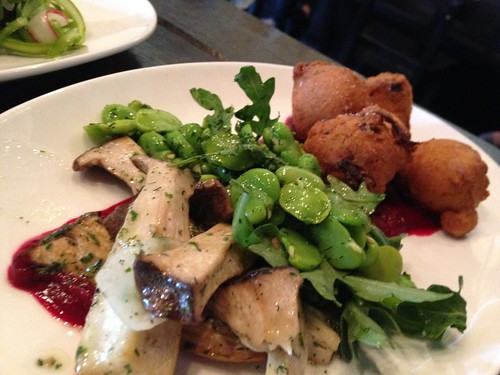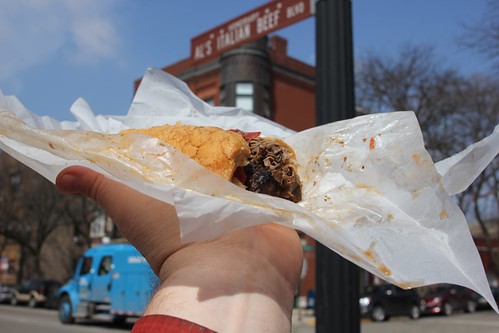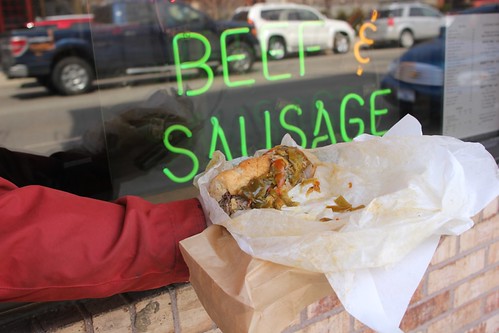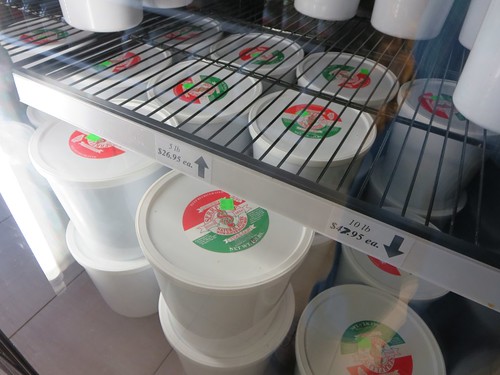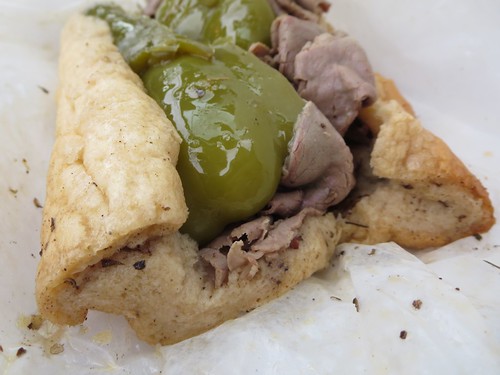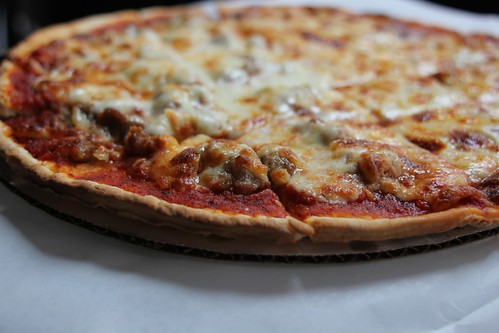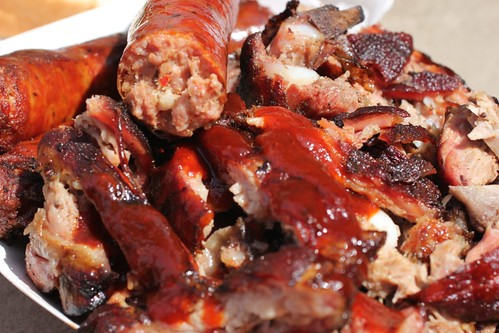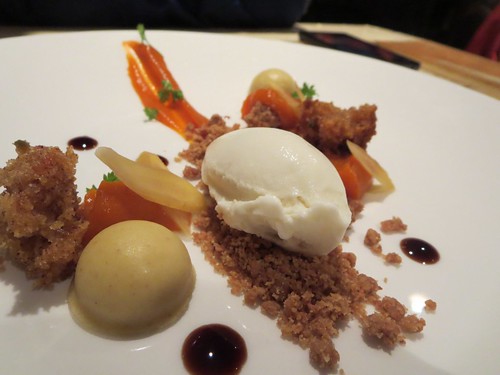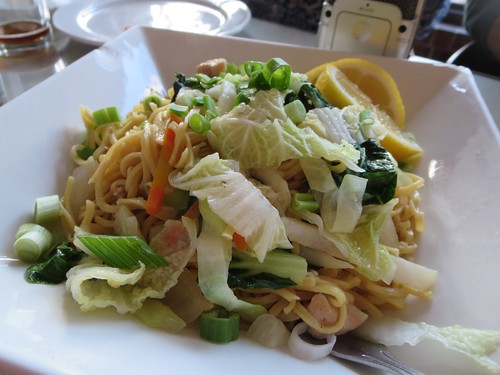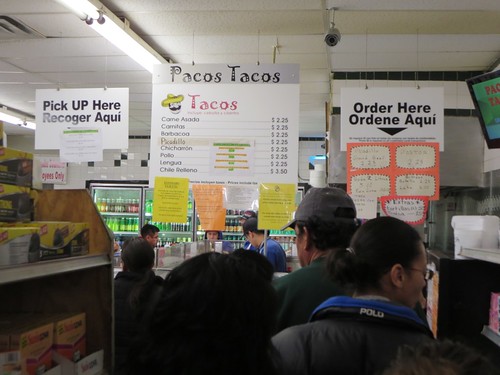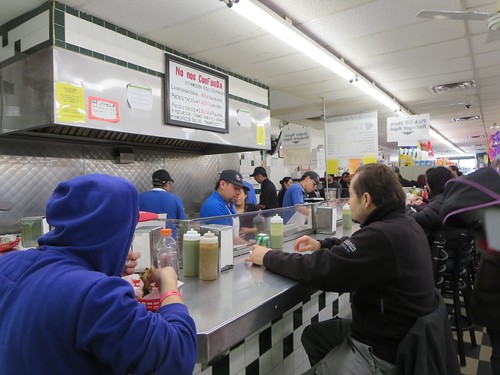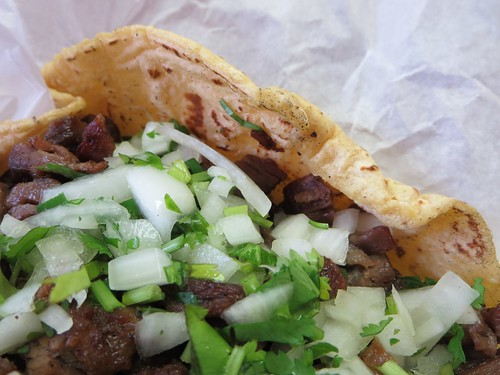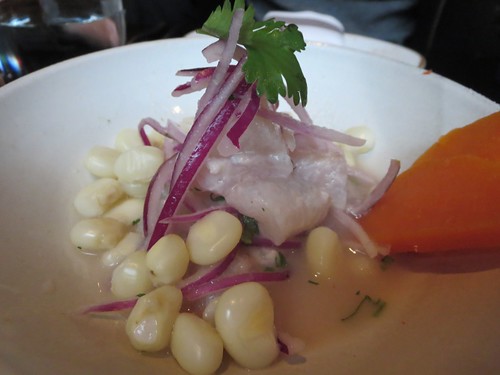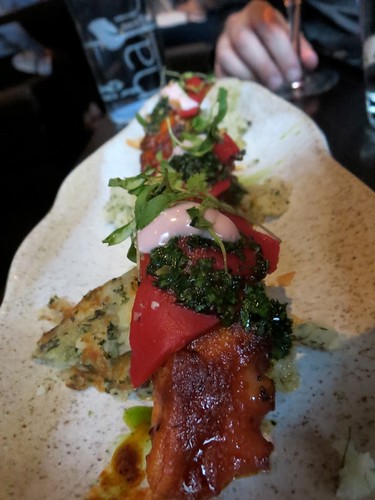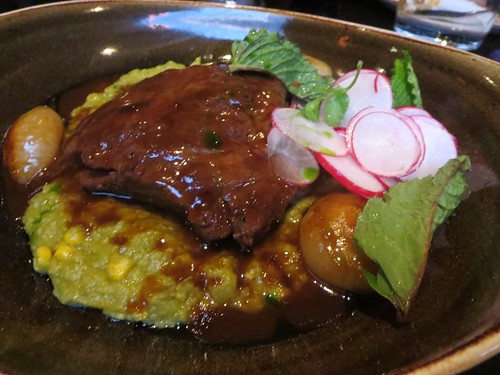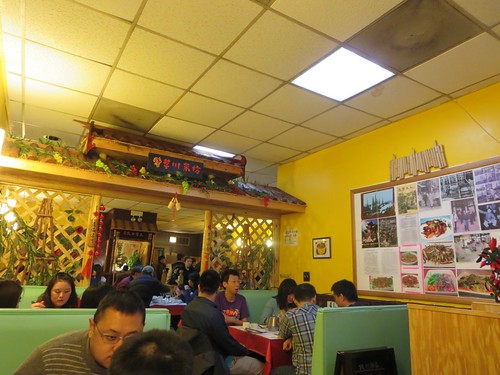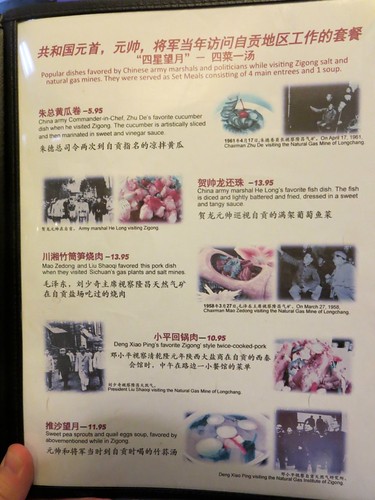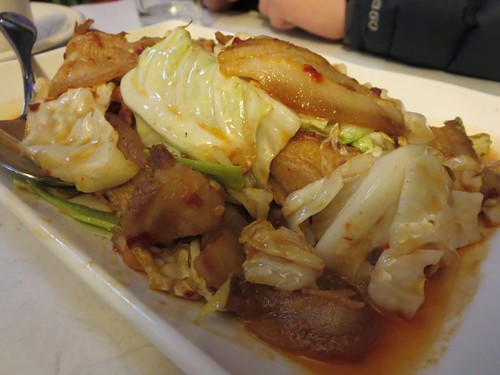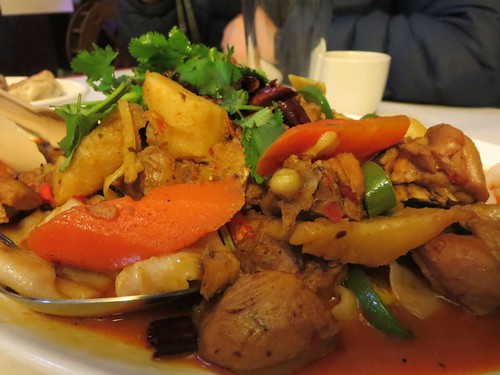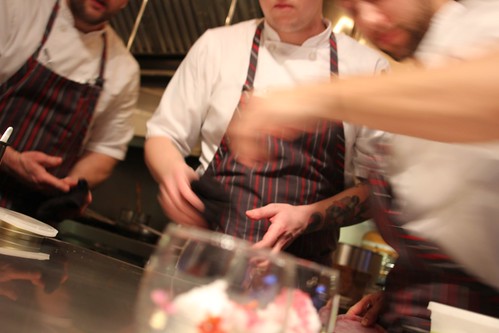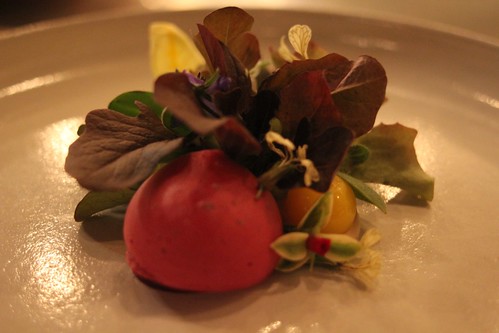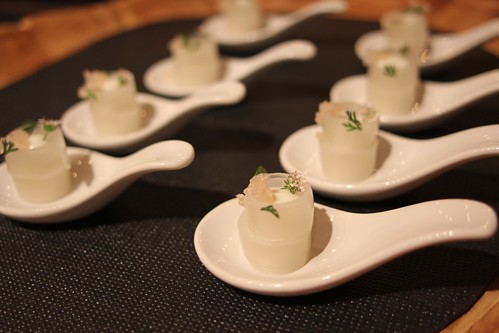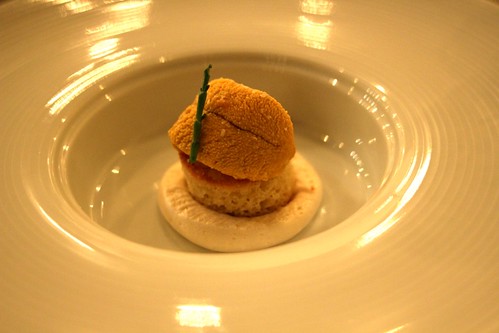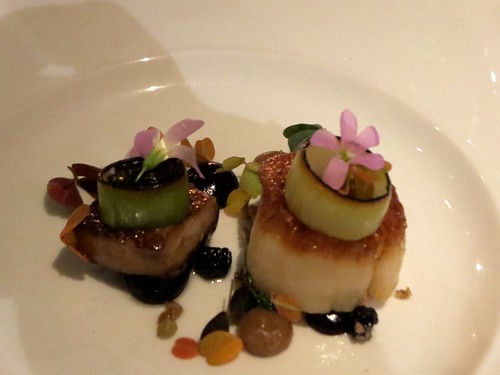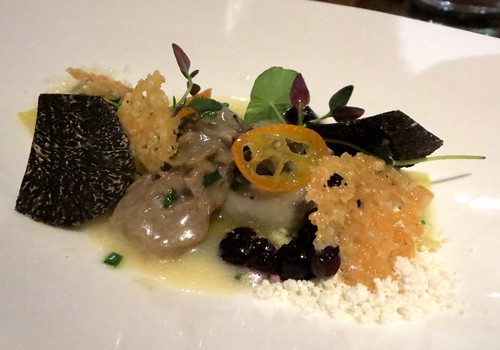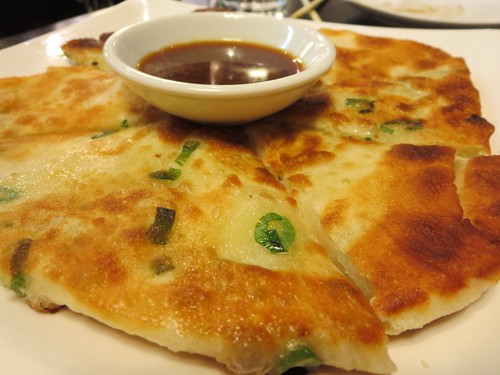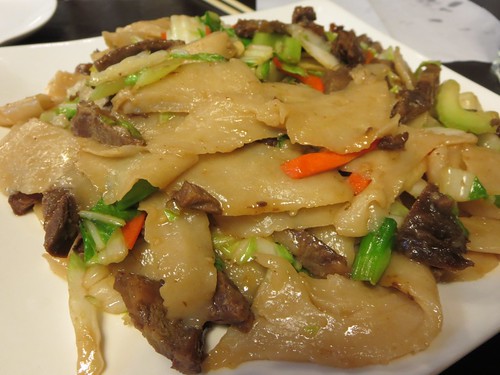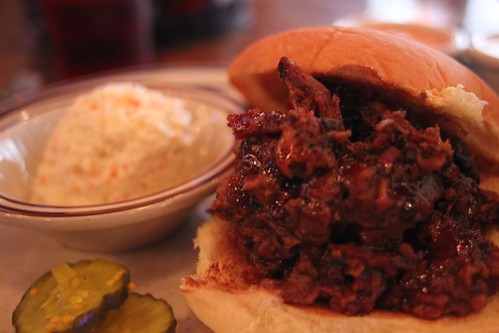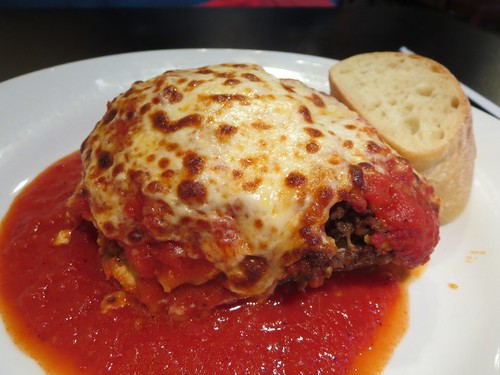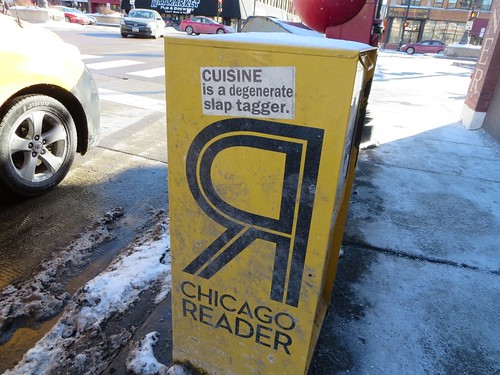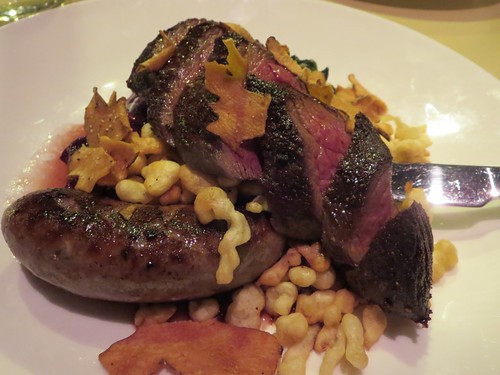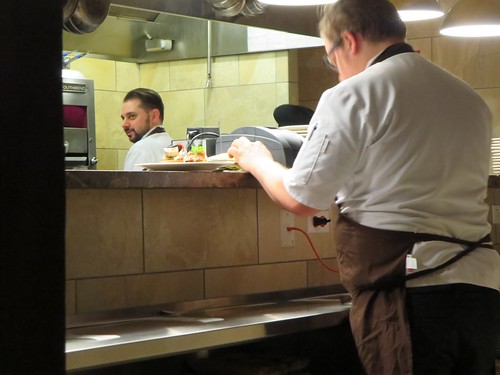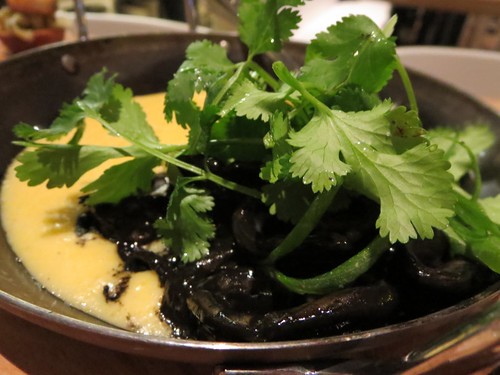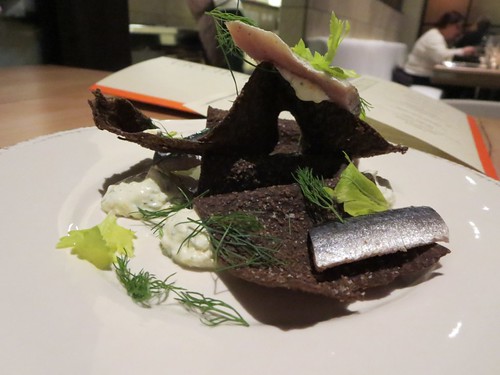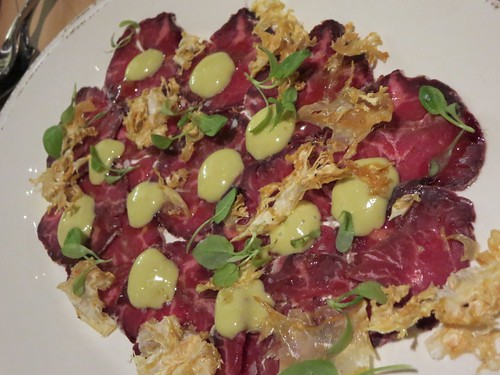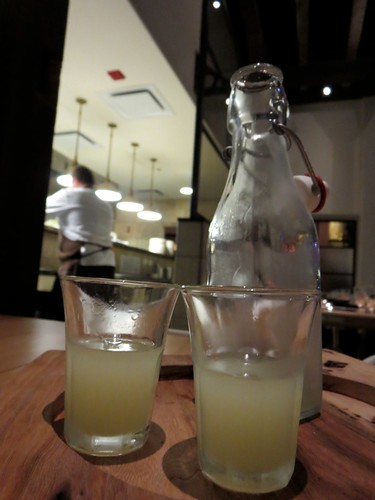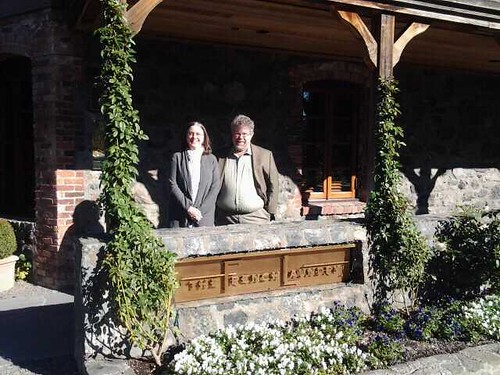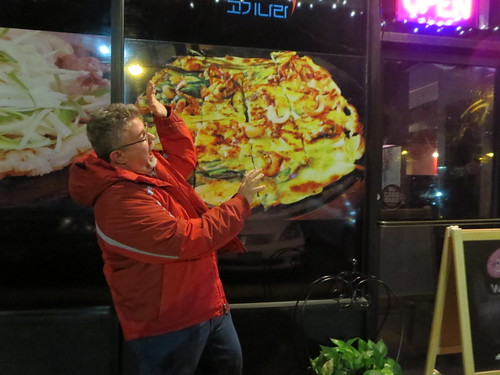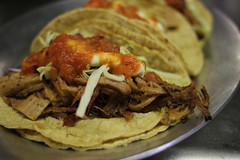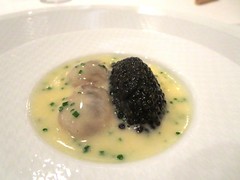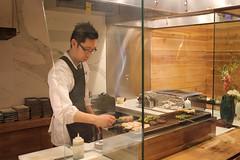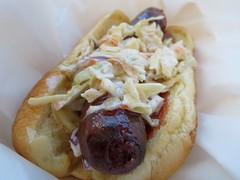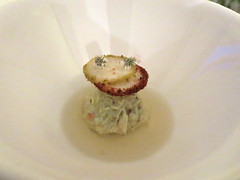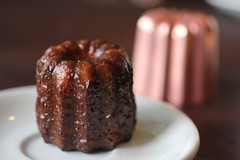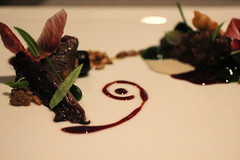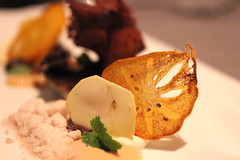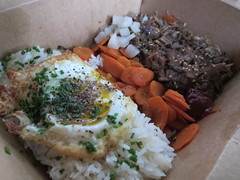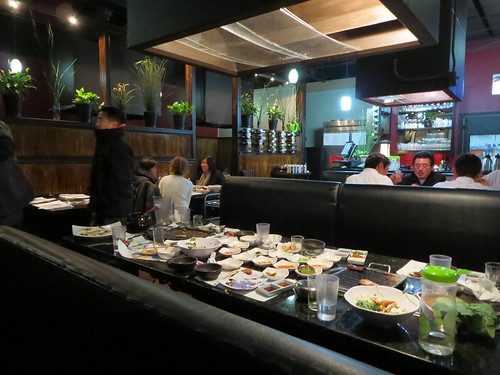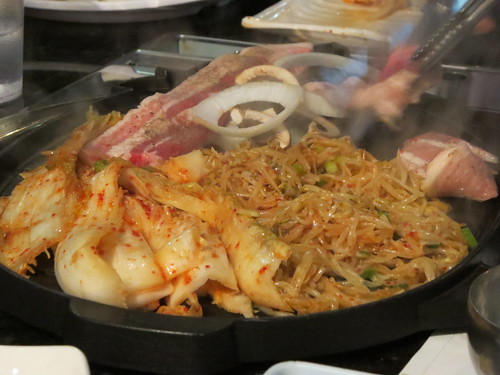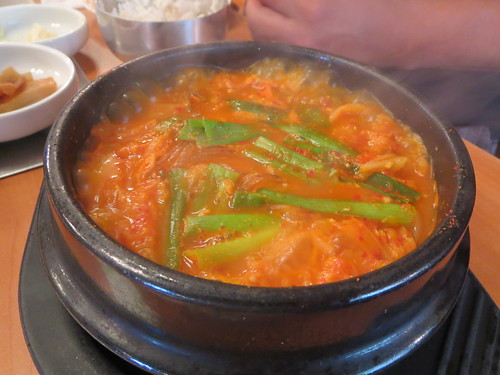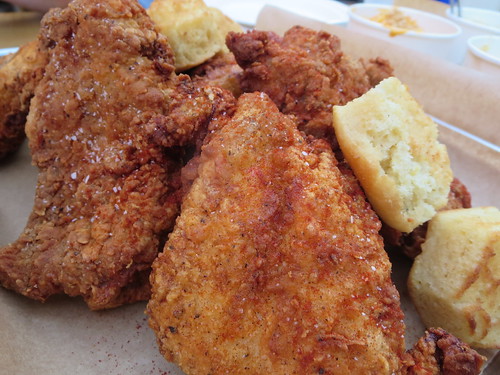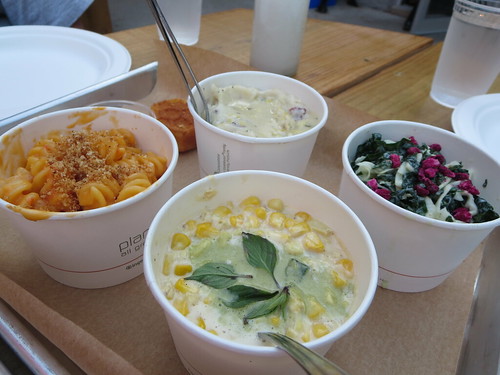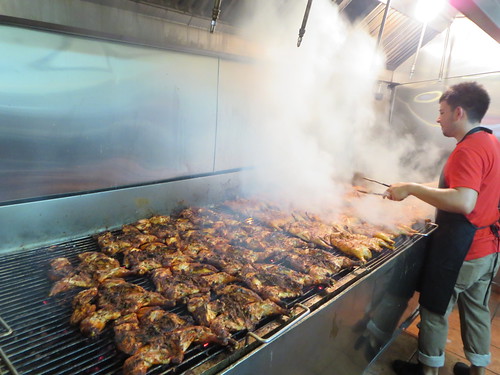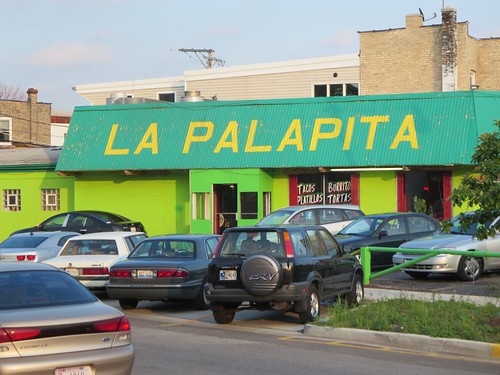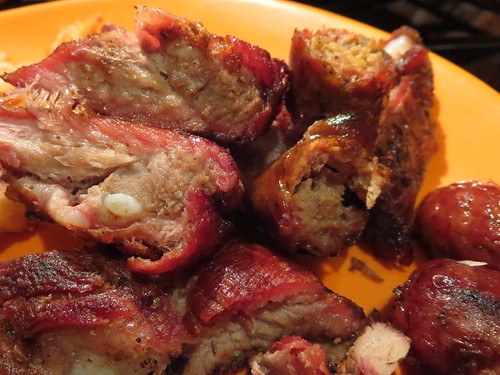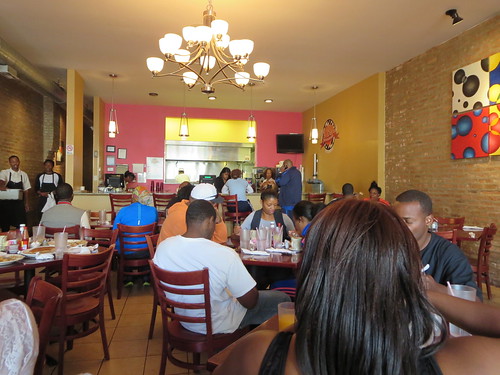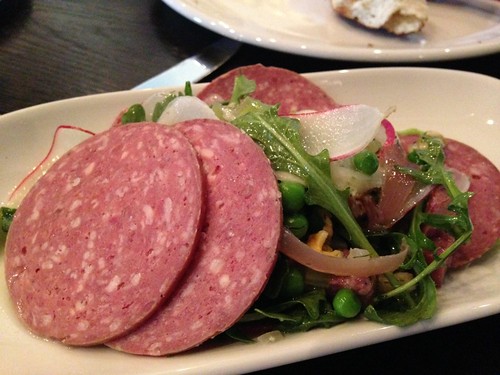
The Radler. I love Vie and feel deep sympathy with its core philosophy, I’ve known Nathan Sears who was its #2 for a long time, and a kind of casual but updated German beer hall sounded right up my alley. So why didn’t I love The Radler the first time? Things were nice enough (except the fried spaetzle, which I think are too dry, like getting Chex Mix as a side at dinner) but somehow it didn’t click for me that first night, even things others loved like the onion tart were just… nice.
And that might have been the end of it, if I didn’t know the chef and respect his work. You try a place, it’s okay, you’re done. But there had to be more, I thought. I wasn’t going to give it up that easily. A month later I went with another friend.
I loved it. I felt entirely in tune with its philosophy. Back in one of my podcasts Nathan had said “Germans eat tomato salads, but you never see a tomato on a German menu,” which to me is the most succinct expression of this restaurant’s reason for being: things grow in Germany, which don’t fit an American idea of German food, but there’s no reason not to use them. (He’s also joked, or not joked, that it’s really an Italian German restaurant, Italian techniques and desire for fresh ingredients applied to German dishes.) So you get some slices of summer sausage with a salad and spring peas, or fritters with a beet puree and fava beans. What the hell is that? A kid might put that jumble on a plate, you think. Except it’s great, the combination of salty cured meat or friedness and spring green freshness. Another example came at a all-veal dinner he did with Scott Manley at Table Donkey & Stick: slices of pink veal tossed in a tomato vinaigrette, as light and fizzy as a big hunk of cow could possibly be.
So how can a place be magical twice but strike you as a miss the first time? Is it because the seasons changed? A little, I think, things were greener the second and third time. Did I mature as a human being and a diner in a month? Hey, who am I to say. But mainly, I think it just goes to show that restaurants aren’t movies or plays or books or concerts. They’re ineffable, they’re about the moment on a certain night different from all other nights, and sometimes the moment just doesn’t work when it should. After three visits The Radler is one of my favorite new restaurants, maybe the best new restaurant of the year, doing wonderful stuff that’s different and full of life and freshness, with the stalest of ethnic cuisines. It has an easy atmosphere in a sometimes pretentious scene, it has a fine beer list of Germanish things which actually go with food because they’re not all IPAs. So go. And if it doesn’t work for you, wait a month and go again.
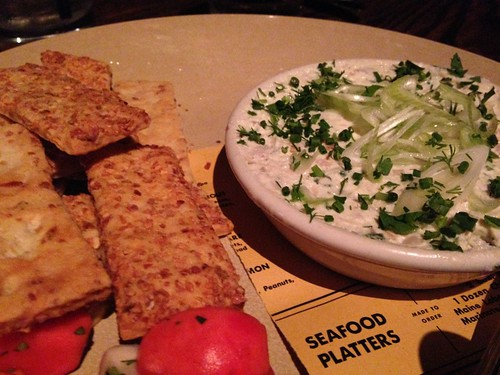
Kinmont. I had a great dish by Duncan Biddulph, chef of Kinmont, recently— a kind of fish soup or stew with a puckeringly strong tamarind bite. But it wasn’t at Kinmont— it was at the Reader’s Key Ingredient Cook-off party, and I clearly wasn’t the only one who liked it, since it won among the tamarind dishes and I think won the whole thing. It was a well-crafted and imaginative dish, but when I went to Kinmont, the seafood restaurant Biddulph helms from the Element Collective group (Nellcote, Leghorn, etc.), only half that equation was at work there. Well-crafted, yes— everything was well-executed, certainly, but imagination seemed much more tightly reined in. The first thing we had was the most satisfying— a trout dip, relatively simple but timeless, smoky trout and cream cheese and bits of onion and greens in perfect proportion. It not only fit our mouths perfectly, it fit the faux-midcentury-Wisconsin lodge atmosphere just as well. To be honest, I wasn’t entirely wild about the concept going in— the faux-lodge thing has been done before, in a Lettuce Entertain You way, at places like L. Woods or The Canoe Club on Halsted a decade and a half ago— but at least it was being carried off really well here by this group.
Clam chowder was likewise nicely executed, satisfying, then the main courses came… and they were perfectly good pieces of fish, cooked just right, and no more. Is that enough for a concept? It’s true to that food, but I couldn’t get that excited about a straightforward fish place that, say, makes McCormick & Schmick look really puny, but no more. It’s nice that they’re dedicated to sustainability, and I’m sure there’s a market for a pretty straight fish place as there’s a market for conventional steakhouses, but that kind of safe business dining doesn’t excite me… and when I know the chef can do more interesting and eye-opening things, I wish they were on the menu of his restaurant.
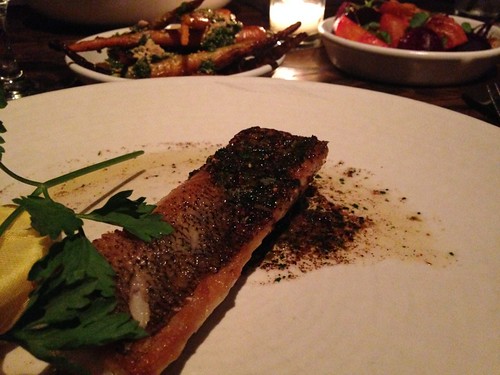
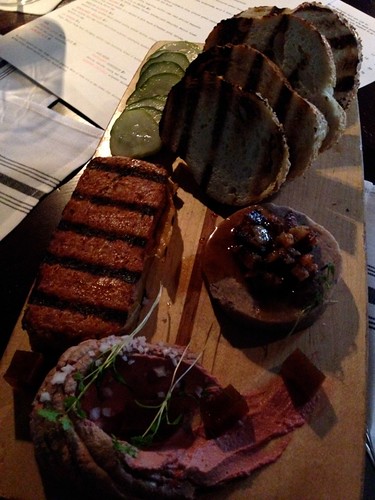
Laughing Bird. Is this finally the Filipino moment? We seem to have enough places trying to make Filipino flavors accessible through other styles of food (Pecking Order with fried chicken, Smalls with barbecue) and Laughing Bird gives us a nice, hip Filipino spot with a familiar chef (Top Chef alum Chrissy Camba, recently at Bar Pastoral). Hey, Portuguese-Macanese worked, why not this?
I hope it works. It’s not cohesive yet, at its best pulling off Filipino flavors with fine dining finesse, at its least successful (the pancit noodle dish, surprisingly) coming off like an overpriced version of delivery Thai. That’s the death for any attempt to do cheffy Asian food, the $16 dish that’s half as good as the $8 version. But the good was good enough that you hope it has the time and finds the audience to work its way to a menu that works as well as Fat Rice’s does.
A plate of charcuterie was interesting, ranging from super-smooth chicken liver to a block of grilled meat that, nobody wanted to say, was surely inspired by the ubiquity of Spam in parts of the world where Americans went in WWII. I’d have liked more Asian flavors (and fewer French or Jewish deli ones)— Mike Sula liked the little cubes of adobo gel, but I couldn’t taste anything in them. Octopus with dinuguan (a blood-based sauce) was great, though, and I especially liked the “crispy pork a la Nadim,” which seemed a train wreck by its description: a tough little piece of tonkatsu (breaded pork) atop some Manila clams in a broth the color of a fire engine, with braised fennel at the bottom. Our server, the bartender, told us to eat it all together, and he was right— that spicy rich broth brought the gnarled pork to life and the fennel gave it complexity that made me wonder why bland things like bok choy are so common in Asian cooking when fennel exists. It was a wow dish; will it and a few others make the awkward space (the former Tank Sushi in Lincoln Square, which is about big enough to play softball in) and somewhat inexperienced servers (the bartender had previously been Tank’s delivery guy; that said, he was a great host) work in time? Here’s hoping.
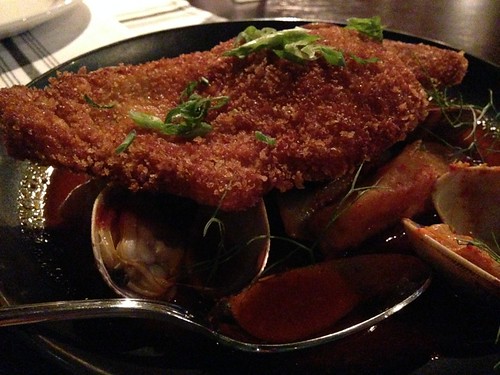
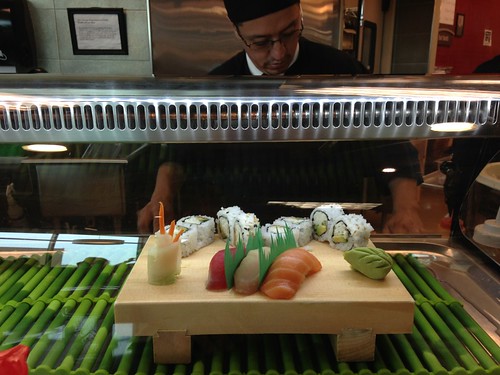
Sushi counter at Mariano’s, Ravenswood. Mike Sula reviewed, and had unaccustomed praise for, the barbecue from the mega-Mariano’s at Lawrence and Ravenswood, and I live as close to it as he does, so I might as well toss in my two cents. I didn’t hit it for the BBQ, though— I was still detoxing after this— instead I went to the sushi counter. And like him, I’m surprised how entirely respectable the grocery store version can be. It’s mostly rolls, but you can get sashimi and nigiri with pretty nice quality fish, and at least the dragon roll I had was done well, not gooped up as has become the common practice. It’s not Katsu, but it’s certainly as good as a better neighborhood sushi spot.
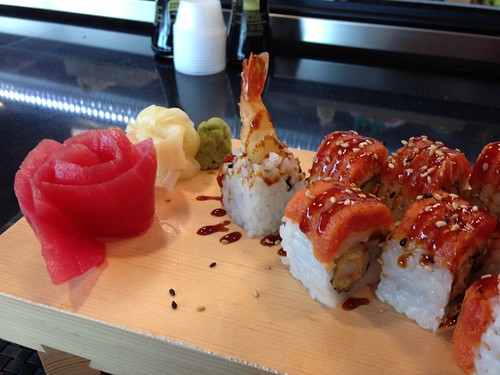
Disclosure: I was recognized every time at The Radler and comped this or that, including the veal dinner. The others were all paid for, though there might have been a comped dessert at Kinmont, I can’t remember for sure.
Tags: Kinmont, Laughing Bird, Mariano's, The Radler

 Posted in
Posted in 
